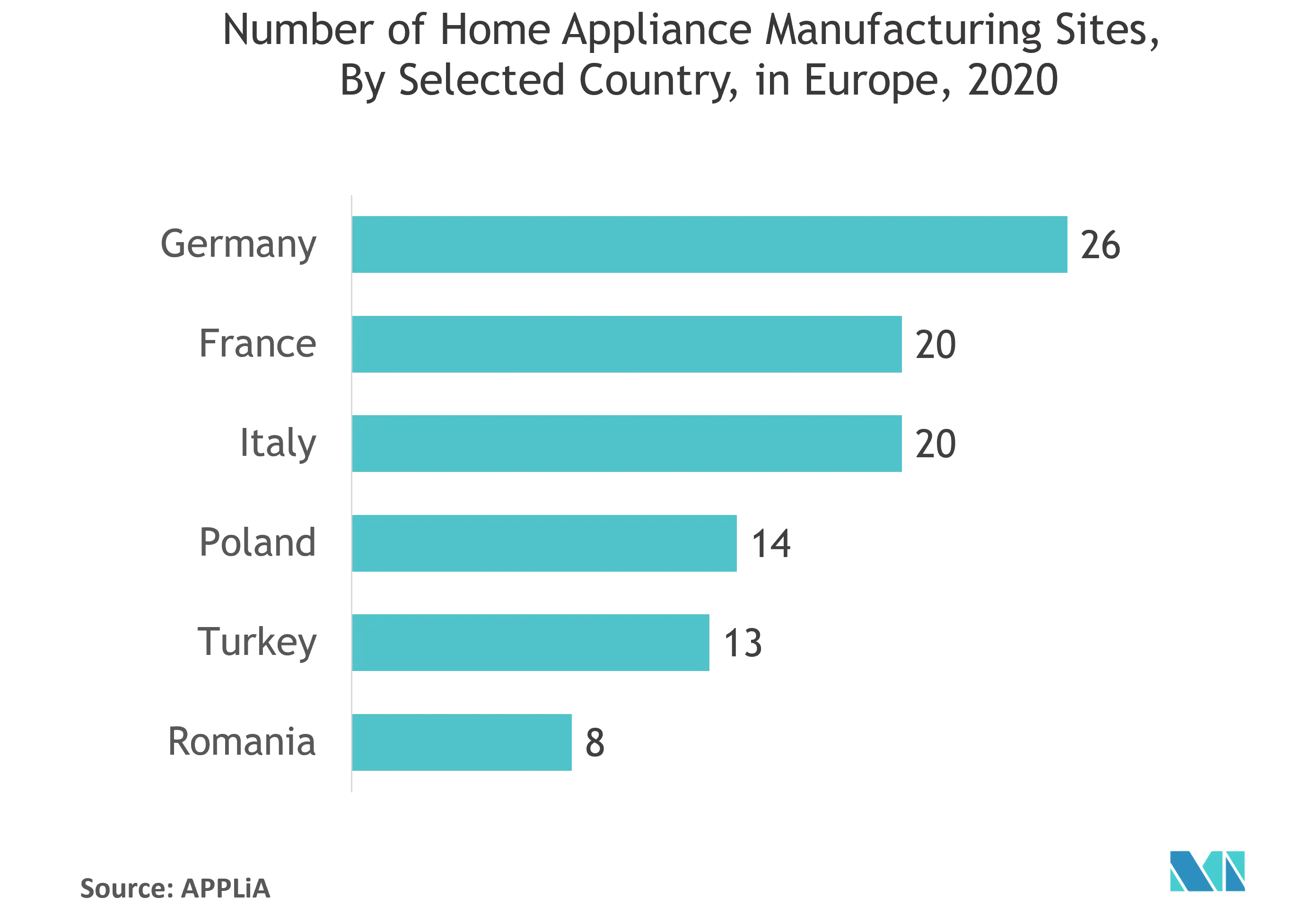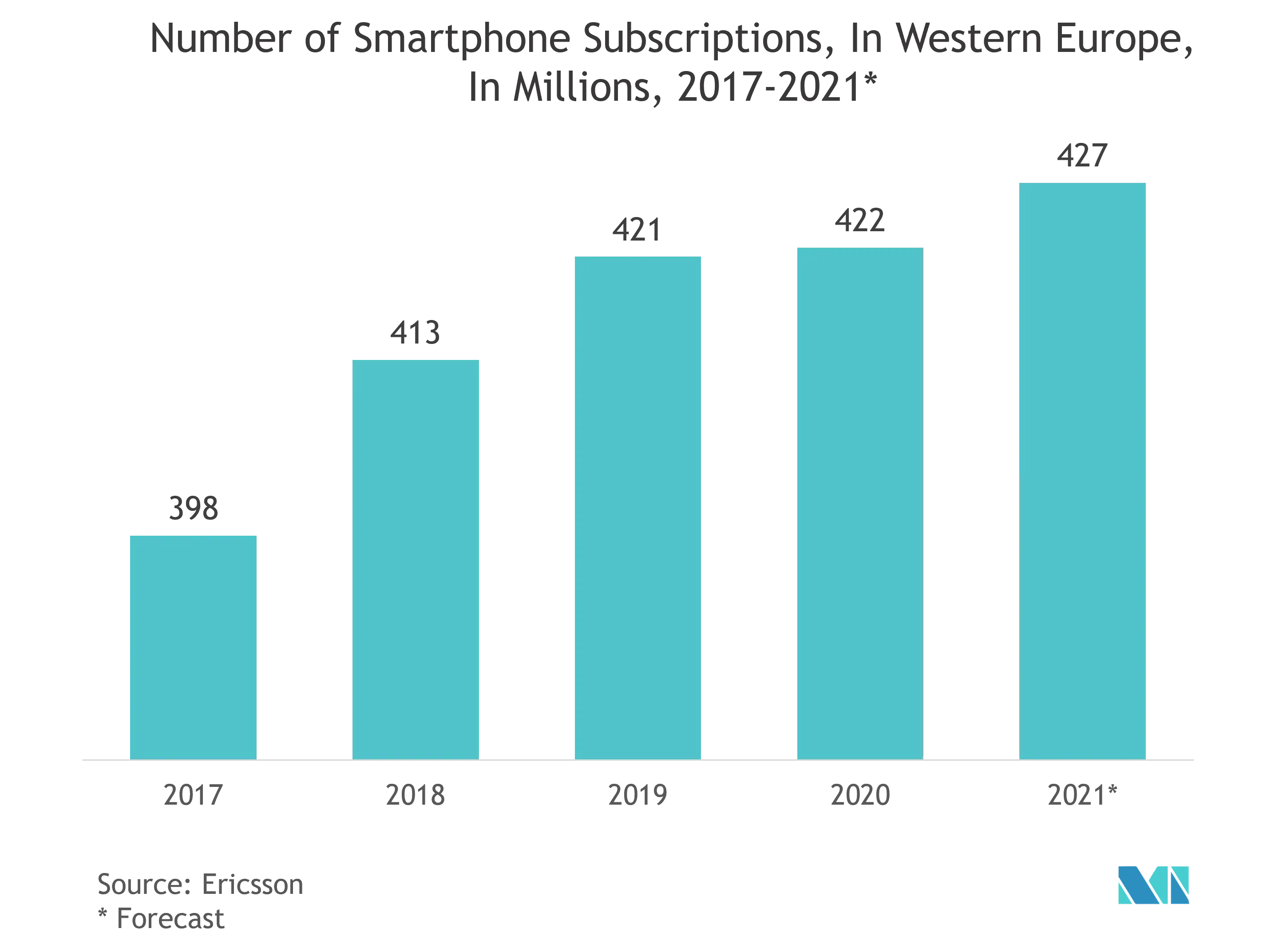Market Trends of Europe 8-bit Microcontroller Industry
This section covers the major market trends shaping the Europe 8-Bit Microcontroller Market according to our research experts:
Consumer Electronics and Home Appliances is Driving the Market
- Smoke detectors, thermostats, and glass breakage detection systems benefit from the ultra-low power consumption and integrated high-performance analog characteristics of 8-bit MCUs. Smart sensor applications that require home automation, remote monitoring, and control can benefit from integrated wireless networking functionalities. These kinds of applications are growing in demand.
- For instance, Toshiba's TMP86FS49 microcontroller is the company's first to utilize Silicon Storage Technologies' (SST) SuperFlash memory. It combines specialized peripherals for front-panel applications in domestic appliances with an 8-bit core for cost-effective implementation. This home appliance microcontroller is based on the business's TLCS-870/C 16MHz 8-bit CPU core, including 731 basic commands. It enables power conservation via dual clock capability that allows the device to run at 32.768kHz.
- Large appliances, such as washing machines, dishwashers, and refrigerators, can benefit from modern motor control technology's energy-saving features. Because the refrigerator is always on, it can take up to 50% of the household's energy budget, with the compressor motor consuming nearly all of it. Constant speed on/off compressors is still used in most refrigerators. Variable-speed compressors, on the other hand, are gaining popularity in the market. These compressors provide for more efficient cooling and temperature management, lowering overall energy use.
- The smartwatch or fitness band, on the other hand, may not need to surf the Internet viewing for data as it coordinates from various sensor attachments like heart rate monitoring (via a pulse oximeter or resistive chest strap), electrocardiogram (ECG) monitoring, skin sweat, and moisture. Thus, a fitness band must power various sensors (with varying input impedances) and a microcontroller. Since the healthy habits of the people in the region are increasing because of the COVID-19 pandemic, this may be driving the smartwatch market and demand for 8-bit microcontrollers.
- European governments have recognized the importance of smart thermostats in making homes more energy-efficient. Medium and large energy suppliers participate in the Energy Company Obligation (ECO) program, which funds the installation of energy efficiency measures such as smart thermostats. When a gas combi boiler is installed, the Boiler Plus regulations mandate additional energy-saving measures. One of the four different methods suggested is the use of smart thermostats. This program is expected to increase the demand for the studied market significantly.

Increase in Consumption of Low Power Smart Devices
- The increasing reach of the Internet in developing countries, coupled with the proliferation of point devices and smartphones and tablets, like hubs, to manage the applications at home, is expected to change the market scenario. Moreover, continuous advancements in wireless communication technologies are major factors boosting the market for low-power home controls, driving the overall demand for microcontrollers.
- Recent advancements in electronics and data analytics have led to smart devices with built-in intelligence. The allied integration with communication technologies and the Internet is enabling the Internet of Things (IoT).
- The European Smart Metering Alliance (ESMA) initiated an Intelligent Energy Europe project that collects and disseminates information, improving energy efficiency through smart metering. ESMA deliverable D3 defines smart metering and its applications for the ESMA project that has significantly propelled the market for smart meters in Europe. Thus, the increasing investments in projects that stimulate smart meters' installation are primarily driving the studied market.
- Moreover, the increasing urbanization and the increasing inclination toward developing urban lifestyles led to the expansion of smart home technologies and devices, which involves automatic control of electricity, light, and energy to avoid wastage. Hence, the increasing adoption of smart home devices and technologies globally would foster the growth in smart meters for the residential segment.
- Smart homes are one of the EU's ten priority action areas in the Strategic Energy Technology Plan. Under the plan, the EU aims to create technologies and services for smart homes that provide smart solutions to the energy consumer.


